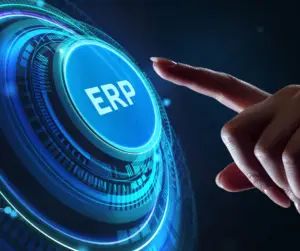In 2018, consulting firm McKinsey conducted a survey among CIOs and IT decision makers from multiple retail formats. The study revealed that cloud usage varies by retail subsectors or functions.
Pure-play retailers are taking advantage of the cloud’s scalability, particularly those who started with a “cloud-first” strategy.
Traditional merchants, on the other hand, have been slower to adapt due to their complex, interrelated, and difficult-to-abandon legacy systems, despite widespread agreement that transferring workloads to the cloud is both essential and desirable.
Some companies choose to shift customer-facing functions first, while others prefer to move functions one at a time.
Getting value from the cloud
Which workflows are most ripe for cloud migration? McKinsey found that while each organization’s value capture, ease of change management, and customer demands are likely to differ, these routines are meant to serve as thinking starters for developing a cloud migration plan and selecting the proper technology partner to help with the transition.
The study found that there are six processes, similar across retail subsectors, that might be shifted to the cloud to improve performance and customer experience.
1 Pricing and margin management
Pricing is a crucial issue for customers and one of the most data-intensive jobs of the chief merchant. It will have an influence on gross margin and sell-through rate, as well as transaction time.
Merchants must be aware of rival prices, examine sales history at a fine level, forecast repricing possibilities, analyze profit and sales implications, and convert the outcomes of these studies into the pricing in shops and on the internet. Unfortunately, for most merchants, this process is mostly manual. Data is usually dispersed across several channels, with no one source of truth, making insight production time-consuming and inefficient.
Multiple data sources may be ingested and prepared for analysis using cloud data platforms. This can save data professionals a lot of time and allow them to concentrate on modeling. The cloud also allows for easy integration of data from external sources and the use of machine learning and analytics to provide insights.
2 Website and recommendation-engine personalization
The importance of cloud-based data clean-up and manipulation technologies that can stitch together disparate data sources is only beginning to be realized by retail IT executives. Because of the cloud’s scalability and the recommendation platforms it provides, merchants can easily set up A/B testing scenarios, validate performance, and iterate on their personalization algorithms.
3 Loyalty-program management
Retail IT executives are just now seeing the value of cloud-based data cleaning and manipulation solutions that can connect disparate data sources. Merchants can simply set up A/B testing scenarios, check performance, and iterate on their personalization algorithms thanks to the cloud’s scalability and recommendation platforms.
4 Real-time inventory view
By linking into data pipelines and unifying all data sources with low latency and high transaction throughput, cloud data platforms might create a real-time single source of truth for inventory levels across all channels and all users, both customers and staff. Some data systems may also allow third-party e-commerce channels and search engines to broadcast local shop inventories, generating additional money.
5 Omnichannel order fulfillment
Machine learning-based analytics solutions on cloud platforms may assist e-commerce executives, as they eliminate the need to hire best-in-class data scientists and engineers or have large on-premise computing and storage capacity. They also provide analytical capabilities such as locating the stores closest to the customer that carry the items the customer has selected, real-time margin calculation comparing store pickup with warehouse shipping, and accurate order-ready-time prediction based on store, basket items, time of day, and other factors.
6 Inventory optimization
The multiple variables involved in inventory management present considerable issues for merchants. To solve the challenges of improving inventory management, merchants, analytics, and CIOs should work together to harness cloud infrastructure and analytics platforms to construct both predictive and prescriptive inventory forecasting engines. Seasonality, promotions, trends, and product alternatives can all be factored into sophisticated engines’ estimates. These engines can improve prediction accuracy and predictability of inventory levels when used in conjunction with cloud-based APIs for supplier promotion.





